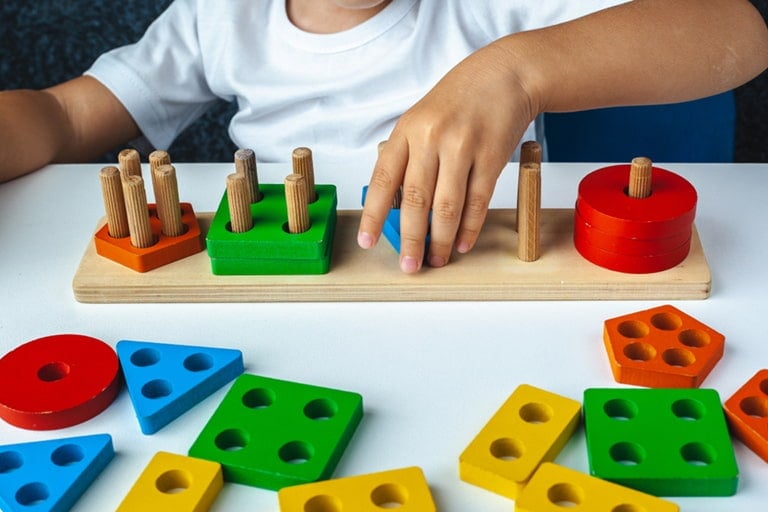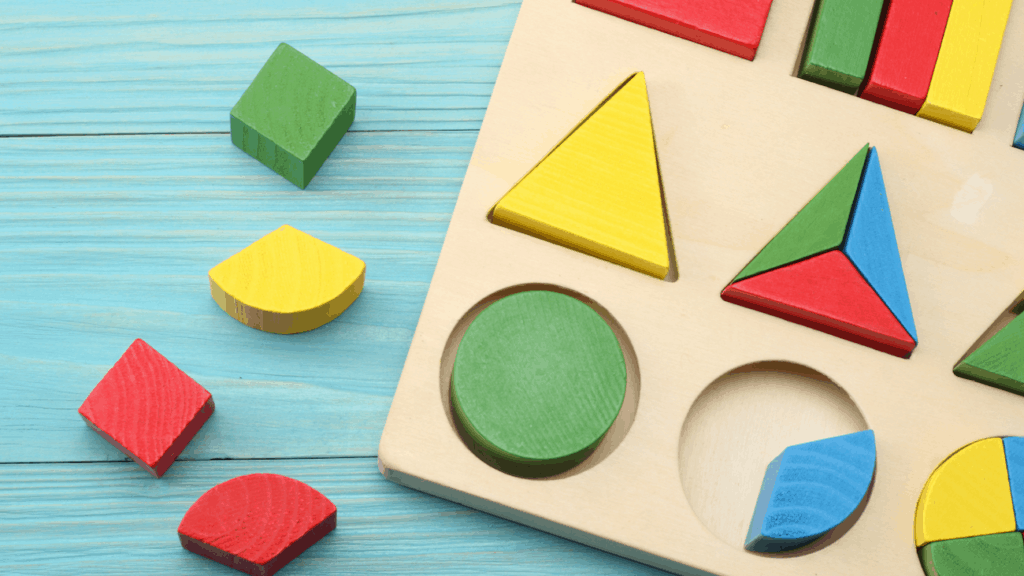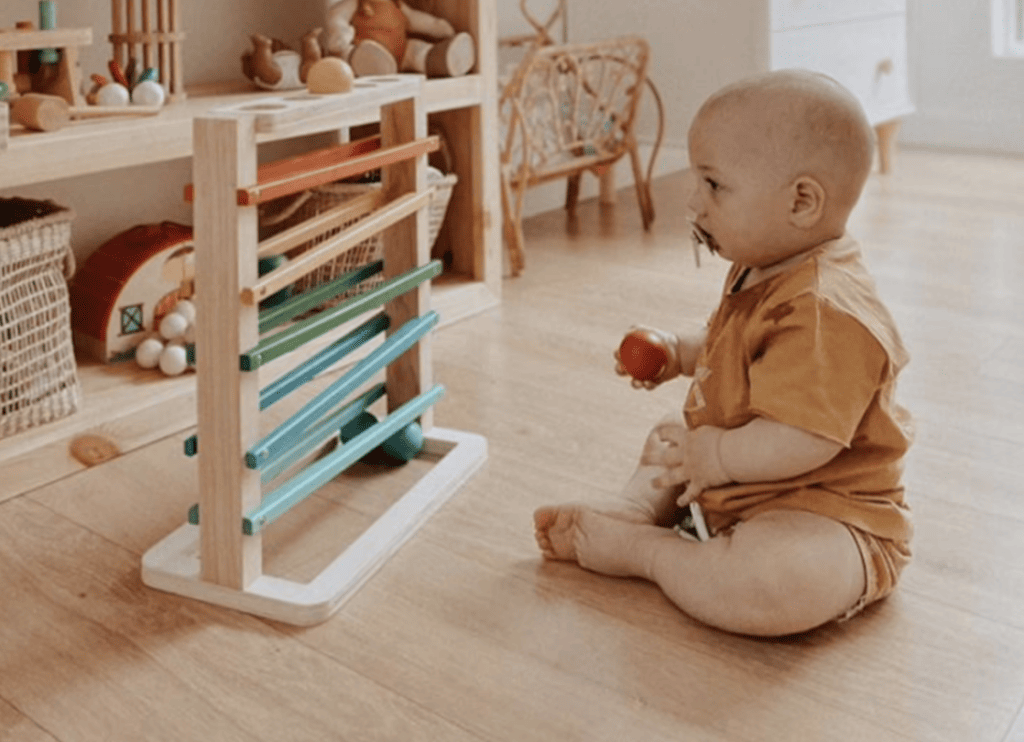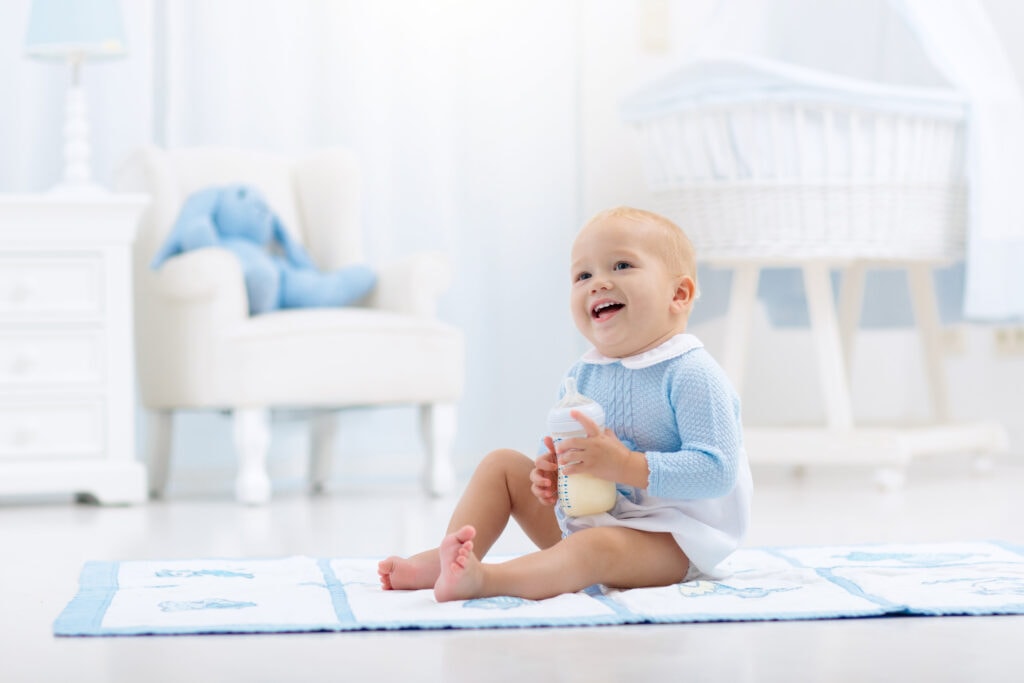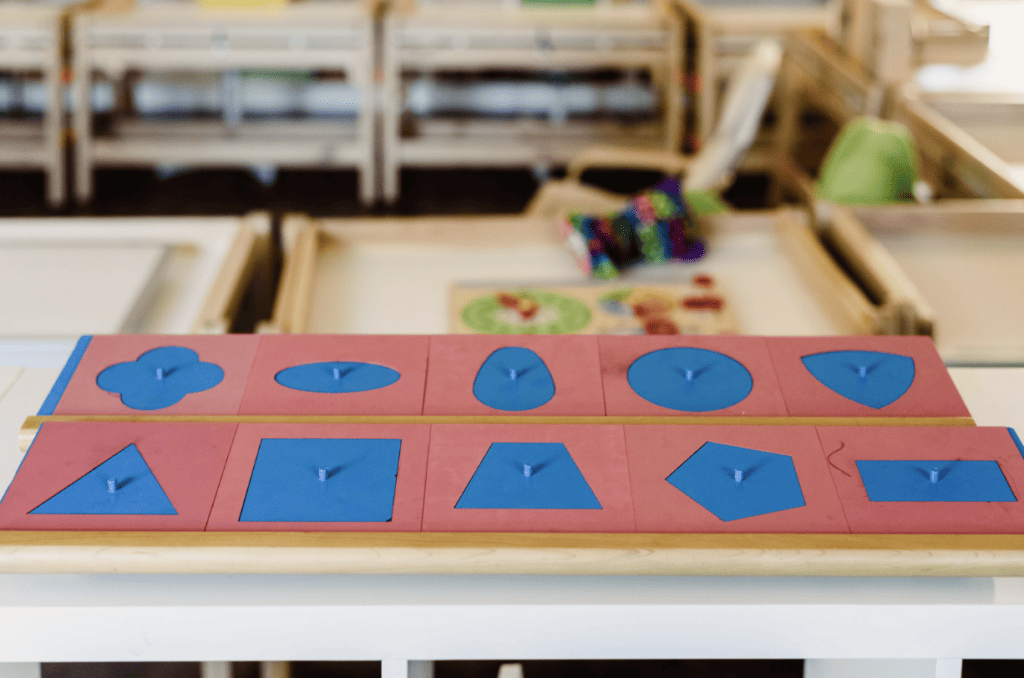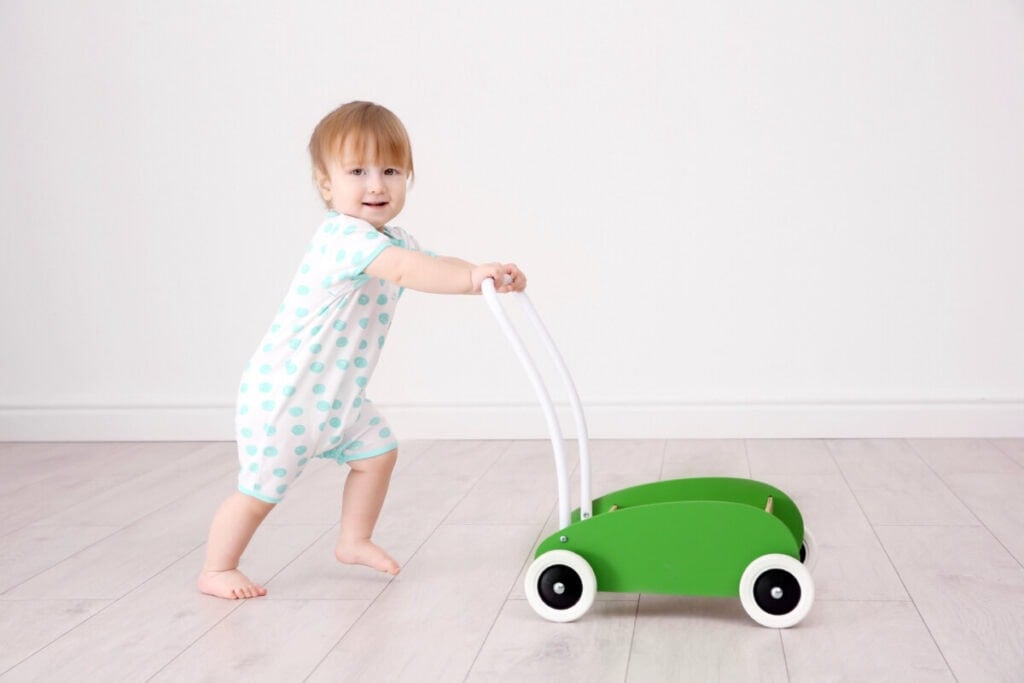
The
Certain types of push walkers are
If you’re still slightly unclear on the
Push Walkers: Montessori Approved?
As mentioned, some baby walkers are appropriate in a
A sit and roll walker is a little stroller-like device. A baby can be placed inside here the way they would be placed into a bouncer. Then they can use their feet as propulsion to push their way around the floor. Just to be clear, this is the kind of walker that is NOT typically approved for
So why shouldn’t you use a sit and roll walker? The biggest reason these are so looked down upon in
It also inhibits the baby developmentally. These walkers often induce walking in a baby before that baby is naturally ready to do so. This goes implicitly against what
Push walkers, on the other hand, are little walkers that a baby can pull itself up to and start walking on its own when it is ready. These are a great way for a baby to begin walking on their own when they feel confident and ready. It doesn’t inhibit movement or the baby’s freedom and it will not cause awkward movement of any kind.

Montessori for Today picks out furniture, educational tools, toys and lifestyle items that we think are the best and most exciting, based on independent research and careful consideration. On some occasions we earn revenue (at no additional cost to you) if you click the links and buy the products. But this doesn’t affect what we choose to highlight and we will never let it bias our coverage.
Another reason these are so great is that they are the opposite of sit and roll walkers in that they promote natural development. A baby will be able to build up its confidence and start walking when it is ready. The walker will help teach them how to walk properly and it will be a great means of exercise as well.
Push Walkers to Buy
Hopefully, at this point, you understand a little better what kind of walker would best suit you and your baby if you’re hoping to employ
Of course, not every
When to Introduce a Push Walker
Finally, we must address when you ought to introduce a push walker into your baby’s life. This might seem like an obvious question/answer, but you should plan this carefully, especially since

It is not uncommon to introduce a push walker to your baby anytime between the ages of 6 months and 3 years old. This is the period when children start learning how to walk and start practicing new motor skills. This is when you should start having a push walker around your house so your baby can start learning how it works.
What matters most at the end of the day is having a push walker available to your baby at a younger age so they can start exploring as early as possible. When you notice your child starting to take an interest in pulling themselves up and practicing extra mobility, this is a prime time to introduce one.

Are Walkers Good for Babies?
This topic has experienced a serious amount of debate over the years. It has come to the point where a person’s opinion is usually the determining factor on the subject. There are a lot of health officials who say that because walkers present safety hazards they should be completely avoided. However, this is also more regarding sit and roll walkers.
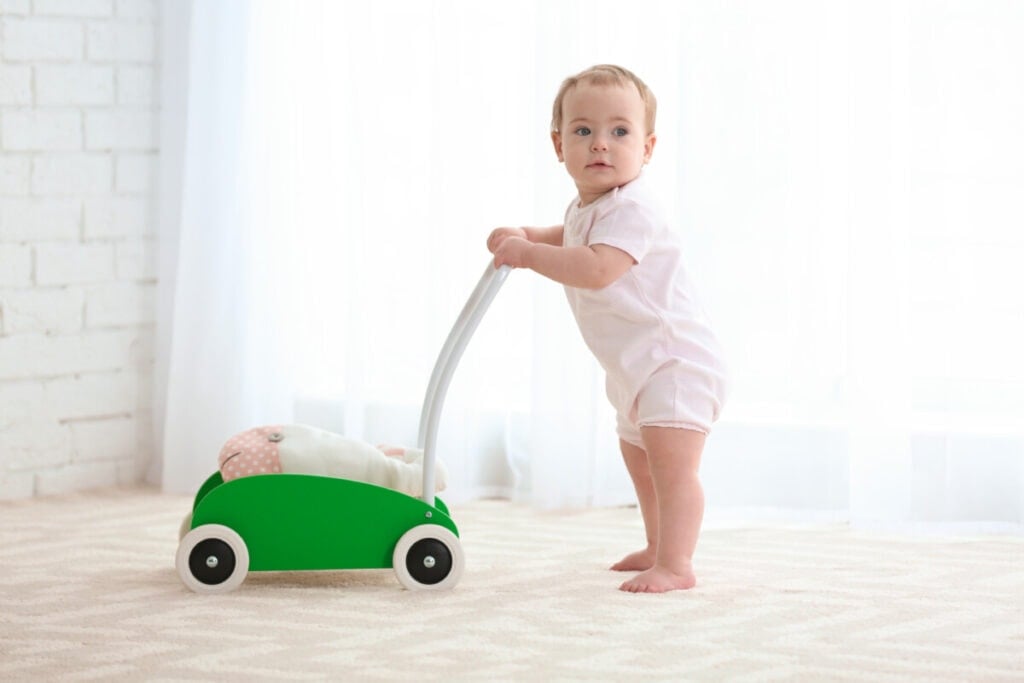
Sit and roll walkers don’t protect babies very well. They could roll into sharp objects, corners, swimming pools, and many other things. However, using a push walker means that anything dangerous a baby could come into contact with will be first hit by the walker.

Push walkers present a slight hazard, but if we’re being honest, a lot of baby toys could be hazardous in their own way. Push walkers can help increase a baby’s confidence and make learning to walk an easier and more stable experience. And if they don’t end up liking the walker anyway, neither you nor they will be any worse off. Just give the walker away to a friend whose little ones might enjoy it more than yours.


